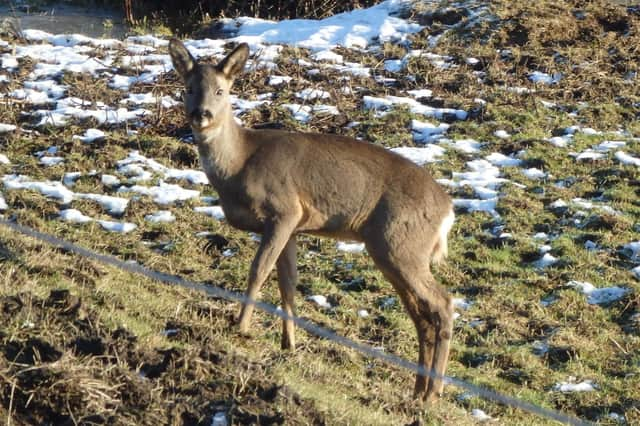Edinburgh has so much more wildlife, from deer and otters to kestrels, compared to the past – Donald Anderson


We both grew up in the Inch, a council estate planned as Edinburgh’s first ‘Garden City’. We basically grew up in the countryside, but what struck us both was just how much more wildlife there is now compared to when we grew up in the 60s and 70s.
A short look on Twitter or reading the Evening News highlights just how much of the city is a home to nature. When Bill and I were young, we played outside all the time and saw what wildlife there was.
Advertisement
Hide AdAdvertisement
Hide AdOtters were not among the things we saw. These days, they have returned to the city and are basically everywhere. The News even highlighted a sighting of one in Haymarket Station.
Another was seen on the security cameras in Cameron Toll Shopping Centre. Social media is full of pictures of otters along the Water of Leith, in Saughtonhall Park, and they have also been filmed in Burdiehouse Burn Valley Park.
There was lots of press coverage too of roe deer seen in the city over lockdown. A deer, sadly dead, was found in Princes Street but more have been photographed in the city centre near the Dean Bridge and crossing Morningside Road.
Nearer to my home, I’ve seen them regularly along Blackford Glen Road, or ‘Libby Dams’ as I knew it growing up. Libby Dams was our playground, but there were no deer back then. I have an old schoolfriend who lives well inside the city boundary and films the badgers and foxes that regularly visit her garden. The footage is awesome, I can tell you.
Advertisement
Hide AdAdvertisement
Hide AdBirdlife is also astonishingly rich these days. One local photographer, Lucasz Pulawski has recorded 110 different birds in and around Burdiehouse Burn Valley Park.
Indeed, the park has the fourth highest number of species recorded anywhere in Edinburgh, and more than Duddingston Loch and the Pentland Hills, with barn owls, the much rarer short-eared owls, sparrowhawks, kestrels, and the UK’s fastest bird, the stunning peregrine falcon.
He has even spotted the exotic and non-native ring-necked parakeet. I’ve seen parakeets in London but was blissfully unaware they had arrived in Edinburgh.
The city’s insect life is no less impressive with an array of beautiful butterflies and moths to enjoy on almost any parkland walk. These include the now common red admiral and comma, which were nowhere to be seen when I grew up and the rarer northern brown argus and the holly blue.
Advertisement
Hide AdAdvertisement
Hide AdMuch of this wildlife can be encouraged into your garden by planting a buddleia bush and by putting up a bird feeder, or you can just go for a stroll in a nearby park.
We already know Edinburgh has some of the finest parkland in Scotland with more than half of all the highest-rated (Green Flag) parks, but I doubt many of us are aware of just how ‘wild’ Edinburgh is.
People often go on about the good old days but, contrary to what we might think, today is the best of times for wildlife in the city. So, if you are looking for a wildlife safari, why not just step out of your front door and go for a stroll.
Donald Anderson is the director of Playfair Scotland and a former leader of the City of Edinburgh Council
A message from the Editor:
Thank you for reading this article. We're more reliant on your support than ever as the shift in consumer habits brought about by coronavirus impacts our advertisers.
If you haven't already, please consider supporting our trusted, fact-checked journalism by taking out a digital subscription.
Comment Guidelines
National World encourages reader discussion on our stories. User feedback, insights and back-and-forth exchanges add a rich layer of context to reporting. Please review our Community Guidelines before commenting.
